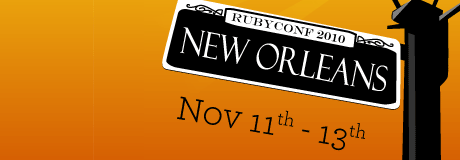For the past couple of years, Hampton Catlin (best known as the inventor of Haml) has run an annual Ruby survey and you can take the 2010 survey now. There are 23 multiple choice questions, mostly about your library and coding preferences.
At the time of posting, 3619 people have taken the survey and, interestingly, you can check out the results of the survey as it goes on – the results page is automatically updated each day.
Things that stand out in the results are the significant growth in jQuery, Ruby 1.9 (up to 24% this year from 7.6% in 2009), and Haml usage, and that 10% of respondents list Sinatra as their webapp framework of choice (up from 2.8% in 2008). Read More


